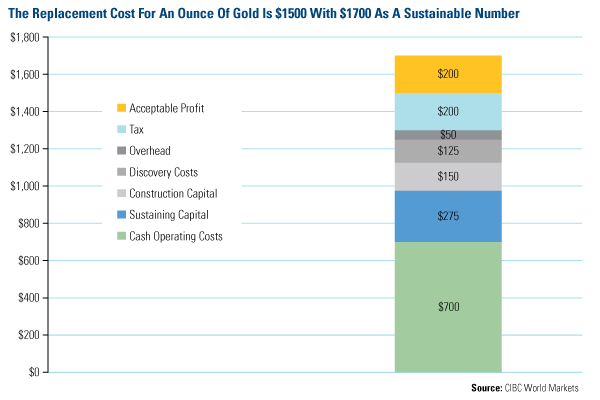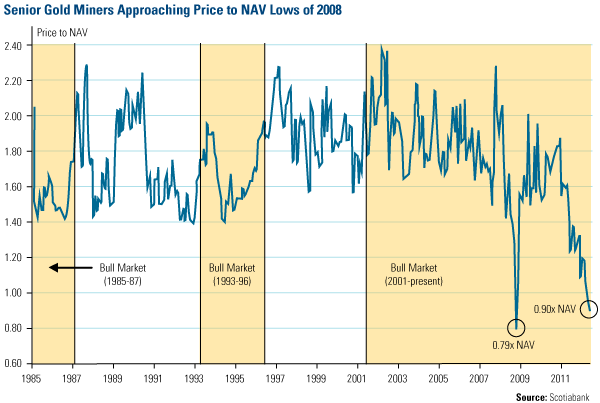Gold Market Radar (May 21, 2012)
For the week, spot gold closed at $1,592.40 up $13.59 per ounce, or 0.86 percent. Gold stocks, as measured by the NYSE Arca Gold Miners Index, fell 1.87 percent. The U.S. Trade-Weighted Dollar Index gained 1.28 percent for the week.
Strengths
- Gold ETF holdings in India have reached close to the $2 billion mark for the first time as of April 30. According to data released by the Association of Mutual Funds in India, assets under managements for gold ETFs have more than doubled from a year ago.
- Billionaire investor George Soros raised his stake in the SPDR gold trust, the biggest exchange-traded product backed by bullion, according to a filing this week. Against a backdrop of record low interest rates and expectations for further central bank gold buying, which is running at its fastest pace in five decades, there apparently are still buyers adding to gold at current levels. Using a 60-day rate of change, gold prices have fallen 2.2 standard deviations now. Over the last 10 years, gold fell to 2.4 standard deviations in October 2006 and to an extreme of 3.4 in October 2008. One year after those falls, the gold price was up 29 percent and 46 percent, respectively.
- The U.S. House Natural Resources Committee Wednesday passed the National Strategic and Critical Minerals Act, aimed at streamlining the permitting process for U.S. mining. The U.S. Department of Energy identified the 7-10 year period to obtain mining permits in the U.S. as compared to the average 1-2 years in Australia as one of the principle barriers to new U.S. mining ventures. Behre Dolbear, an international consulting firm, has identified the U.S. as having one of the longest permitting processes in the world for mining projects. The bill now goes to a floor vote by the full House, but the bill is not without detractors. Rep. Ed Market, D-Massachusetts, unsuccessfully tried to amend the bill to require a royalty payment for 12.5 percent of the value of the minerals produced as a result of a federal permit for mineral exploration or mining on federal lands.
Weaknesses
- Commodities guru Jim Rogers said he is not buying gold as he expects gold prices to fall further and believes they could tumble 40-50 percent off their top if India were to stop its gold imports or if Europeans were to sell their gold. Rogers notes those probabilities are pretty low but there has been some effort in India to curtail the purchase of gold, such as the introduction of new or higher tax rates on gold purchases. This proposed tax, which was announced in March, was later abandoned after widespread protest.
- Two mining CEOs called it quits this week. John Greenslade left Baja Mining after a drawn-out proxy fight with the company’s largest shareholder. International Tower Hill Mines announced that the Board of Directors has decided to undertake a review of the Livengood Project in order to optimize available development alternatives and that it accepted the resignation of James Komadina as President and Chief Executive of the company.
- In an interview on Mineweb.net, Gold Fields CEO Nick Holland said that the gold industry needs a price above $1,500 per ounce otherwise curtailment of projects, rationalization and possibly more consolidation was in the cards. Nick pointed out that the all-in cost of the industry to produce an ounce of gold is probably around $1,400 per ounce and that doesn't leave a lot of margin at $1,500. CIBC recently pegged $1,700 per ounce as the replacement cost for an ounce of gold and highlighted that tax increases have been one of the fastest growing components of the cost creep.

Opportunities
- Low gold prices have been a weight on gold equities. Gold mining analyst Tanya Jakusconek of Scotia Bank highlighted that its group of North American senior gold miners is currently trading at 0.90 times the NAV compared to the lows of 0.79 achieved in 2008.

- Before gold rallied in the last two days of the week, all the price gains made this year were erased as the dollar had gone a record 13 days of consecutive gains. What may have snapped gold back was the realization that the run on the banks in Greece by its citizens withdrawing their money could be a wildcard that forces the European Central Bank to act sooner than expected and/or lead to a policy mistake on how to address the country’s solvency crises. Goldman expects gold prices to rise 25 percent to $1,940 an ounce in 12 months and Morgan Stanley forecast prices to rebound to an average of $1,825 this year and $2,175 in 2013.
- As for gold equities they are down but not out. However, investors are adamant about one thing…SHOW ME THE MONEY! In his seminal research report “Stop ‘Growth At Any Price’ (GAAP) Building,” George Topping of Stifel Nicolaus noted that rampant mining inflation has benefited those involved in mine-building to the detriment of shareholders. George pointed out that if mining companies deferred lower internal rate of return (IRR) deposits this would allow management to better focus on cost control, send a message to consultants/contractors that fees have gone too far, and free up labor for the remaining projects. Projects should pass stress test levels of using a $1,200/oz long-term gold price and deliver a minimum 10 percent IRR. The current dynamic in the sector of escalating cash cost and capital expenditure creep has made the high grade/high margin deposits more accretive and with less downside exposure on the gold price. These are the types of companies our gold funds focus on for delivering the best value creation over time. Gold company shareholders are likely to be supportive if the capex savings are paid out as dividends which could be raised to levels that approach 5 percent. George points out that a change of strategy by the gold mining companies is required to reverse the flow of funds out of the gold sector.
Threats
- HSBC Global Research lamented that at some point, the focus will come back to America versus Euroland and the U.S. dollar will come back under pressure. HSBC documents the pending fiscal cliffhanger the U.S. faces with nine tax expirations or spending cuts that investors should worry about seeing in the near future: 1. Expiration of 2001/2003 Bush-era income tax cuts, 2. Budget Control Act Sequester, 3. Alternative Minimum Tax (AMT) increase, 4. Interaction of AMT and income tax changes, 5. Payroll Tax Cut expiration, 6. Expiration of extended unemployment benefits, 7. Reduction in payments for Medicare physician services, 8. New Medicare Tax, and 9. Tax extenders.
- HSBC compiled a worst-case scenario for these potential policy changes and a reality-check scenario that tries to estimate what may actually happen. In the worst-case scenario, the tax increases and spending cuts could amount to $665 billion or about 4.1 percent of GDP in 2013; in a reality-check scenario HSBC forecast 2013 GDP to come in at 1.8 percent.
- David Rosenberg, of Gluskin Sheff Research, also reminded us this week the current luster surrounding the U.S. economy may be in for some headwinds as the fall approaches. With arguably the most important presidential election since 1980, in terms of setting the economic and fiscal path for the next decade, the U.S. government is on track to again hit the debt ceiling by October, just weeks ahead of the election, with Republicans planning a new standoff on debt limits to be front and center. Dave notes that “at that point in the fall, a lot of folks may have wished they were buying the dip in gold during the winter and spring.”












